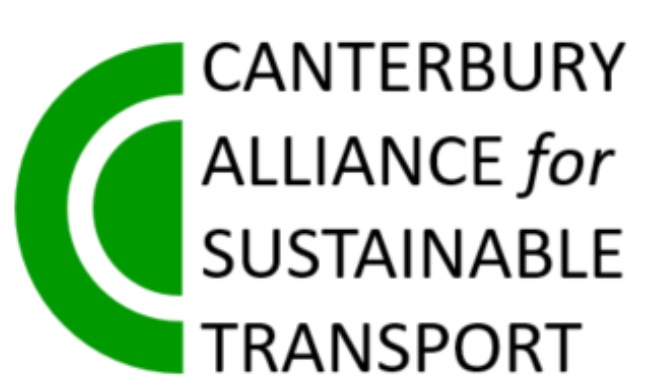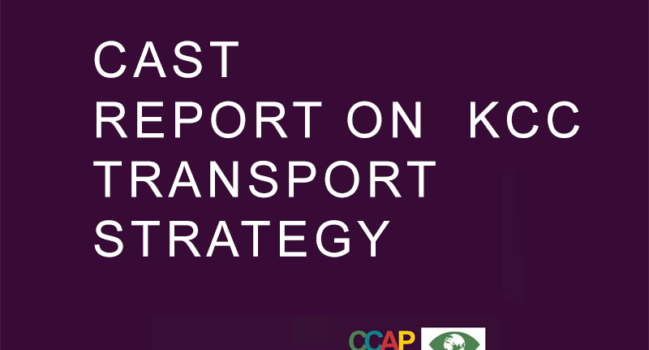 I am chair of the Canterbury Alliance for Sustainable Transport, affiliated to the Canterbury Climate Action Partnership. I would like to respond to the current public consultation organised by KCC with reference to its emerging Local Transport Strategy.
I am chair of the Canterbury Alliance for Sustainable Transport, affiliated to the Canterbury Climate Action Partnership. I would like to respond to the current public consultation organised by KCC with reference to its emerging Local Transport Strategy.
The views set out below have been endorsed by the members of CAST.
We are making our comments by email, rather than by the online consultation document. This is because the questionnaire relates to the whole of the county, whereas we believe that our residents are concerned mainly about the performance of the road network local to them.
Our first proposal is that Kent County Council, as the highways authority, engage directly with our residents about their local concerns. This should be by talking . directly with residents’ associations , and other relevant voluntary and community organisations , and with the generality of residents via a Citizens’ Assembly, as has happened in other areas of two-tier local government.
We agree with the County Council’s assessment of the challenges facing highways and transport in Kent. We note that in Challenge 8 it is stated “carbon dioxide emission reductions from management and use of the road network are forecast to remain at too high a level compared to the reduced levels needed to contribute towards reducing the worst effects of climate change.” This is certainly the case in Canterbury. Our opinion is that relying on gradual shift from use of fossil-fuelled motor vehicles to ones propelled by electricity or hydrogen will not result in resolving this problem, as this will be counteracted by the large extra number of vehicles using the Canterbury road network resulting from the significant growth in housing required by the Government ,resulting inevitably over the next dozen years in the release of an unacceptable amount of CO2 into the atmosphere
In addition , even if pressure for transition to electric vehicles is successfully maintained by the Government, this does not solve the enduring problem of other emissions, which result from operation of any motor vehicle. As stated in Policy Objective 7B these are notably nitrous dioxide and particulates. Without measures to achieve a reduction in the number of motor vehicles using our roads we can expect greatly increased emission of these elements, which have a serious effect on health, especially of children. We note that when the Government set targets for reduction in particulates, as required by the 2021 Environment Act, Air Quality Management Areas may well have to be extended in Canterbury , and regulations pertaining to these Areas may have to be stricter and more effective.
We believe , therefore, that firm measures need to be taken to reduce the growing congestion on Canterbury’s road network. Realising this , Canterbury City Council proposed in its draft new Local Plan to plan for an eastern by-pass, in order that people wishing to travel by car or van from one end of the urban area of Canterbury to another would not use the central roads which are now already heavily congested. There were three problems with this. First, whereas developers of large housing estates along the route would be required to pay for the stretch of the By-pass that went through their estates, the considerable stretch of it to the north would have to be financed by KCC , and we understand that no agreement on this financing has been reached. Second, this stretch would result in considerable extra destruction of green countryside. Third, it was realised that if the by-pass were built and nothing else were done then drivers would use whatever route they chose to the by-pass , resulting in considerable rat-running down many extra residential streets. Therefore a plan was drawn up which would create five zones in urban Canterbury , travel between which by motor vehicle would be penalised. In fact, though, the new administration of the City Council formed after the recent City Council elections has said that the idea of an eastern by-pass will no longer be pursued .
That leaves the growing congestion and certain future gridlock without a solution. We believe that in this case the County Council, as highways authority, must implement measures to reduce the need to use private motor vehicles for journeys. We see no alternative to the creation of pay-zones for these vehicles, such as Clean Air Zones, Low Emission Zones, Congestion Zones; and we propose that the exact nature of these zones, and the urgent rationale for them should be a main item on the agenda of a Citizens’ Assembly.
We also propose, as further motivation for ‘modal shift’ negotiation of workplace parking levies with the main employers in the Canterbury urban area. We recognise that the main provider of bus services in Canterbury is a commercial firm, operating for profit. However, we believe that with a firm and believable plan in place the bus service could expand as use of private cars contracts.
We note that KCC is fully engaged with the Government over bus service improvement, hope that this will result in extra funding for bus services in our area, and record that one of our members has been involved in providing local advice on bus services to KCC.
We also urge the highways authority to negotiate a multi-mode hub at both of Canterbury railway stations, to ensure that public transport is seamless.
We believe , finally, that cycling and walking should play an important part in effecting a ‘modal shift’ in journeys in Canterbury. We recognise that much has been done over recent decades to create safe routes for cyclists, and the routing of National Cycle Route 1 through Canterbury, and the development of the old Crab and Winkle railway track into a cycle route from Canterbury to Whitstable, and of the Great Stour Way to Chartham have been major advances , helped by significant input from voluntary organisations, and by individuals including members of our organisation. We note and very much approve also the building of the cycle path from Burgate to Barton Court School, funded by Active Travel money. However, there are very serious gaps in the network. We urge the County Council to take advice from voluntary organisations in Canterbury, and to work out a comprehensive plan for removing the gaps.
So far as walking is concerned , we believe many more people would walk into and within the urban area if the process was made more pleasant, and safe. The County Council should make a comprehensive survey of routes into and through the city, identify pavements that are not safe to walk along, and roads that are not safe to cross, and take action accordingly. We urge in particular that pedestrian crossings across the A28 into the old city should be signalised and on the surface, and people walking should not be required to negotiate unpleasant and potentially dangerous tunnels. A 20mph zone throughout the urban area, if properly monitored , would redress a situation where people are afraid to cross the road.
Above is a summary of ideas which we as an organisation have developed in response to the critical situation on Canterbury’s road network, and we hope that during the development of Kent’s Transport Strategy we will be able to discuss them directly with highways officers.
MARTIN VYE
Chair, Canterbury Alliance for Sustainable Transport


